
PEARL Paleoecological Environmental Assessment and Research Laboratory
Department of Biology, Queen's University, Kingston ON, Canada, K7L 3N6
PEARL Home | Proceedings of the Royal Society B | Article on Journal Website| PDF of Manuscript | High-Resolution JPEGS | Queen's Media Release
The Jellification of North Temperate Lakes
Click on an image to open a higher resolution version. Then right click on "Save Picture As..." (for PC) to save the image. All these images can be used in publications related to this paper, provided the source of the photo is acknowledged.
| Holopedium Photos Example images of the jelly-clad cladoceran Holopedium glacialis. Holopedium abundance in softwater boreal lakes is increasing in response to aqueous calcium decline. Look here for photomicrographs of Holopedium from elsewhere on the web |
||
 |
 |
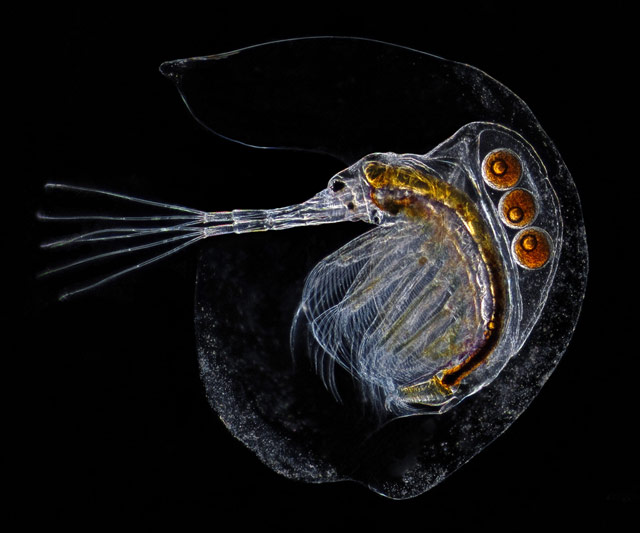 |
| A handful of Holopedium from an Ontario lake. (Photo: Ontario Ministry of Natural Resources and Forestry) |
A single Holopedium. (Photo: Michael Arts, Ryerson University) |
An individual Holopedium with the jelly capsule clearly visible. (Photo: Ian Gardiner / E-Fauna BC) |
|
Cladocera
The Cladocera are a diverse group of microscopic animals common within aquatic systems. This group contains many common herbivores, however some are sensitive to falling calcium concentrations reducing their ability to compete with Holopedium. Daphnia are often referred to as "water fleas" |
||
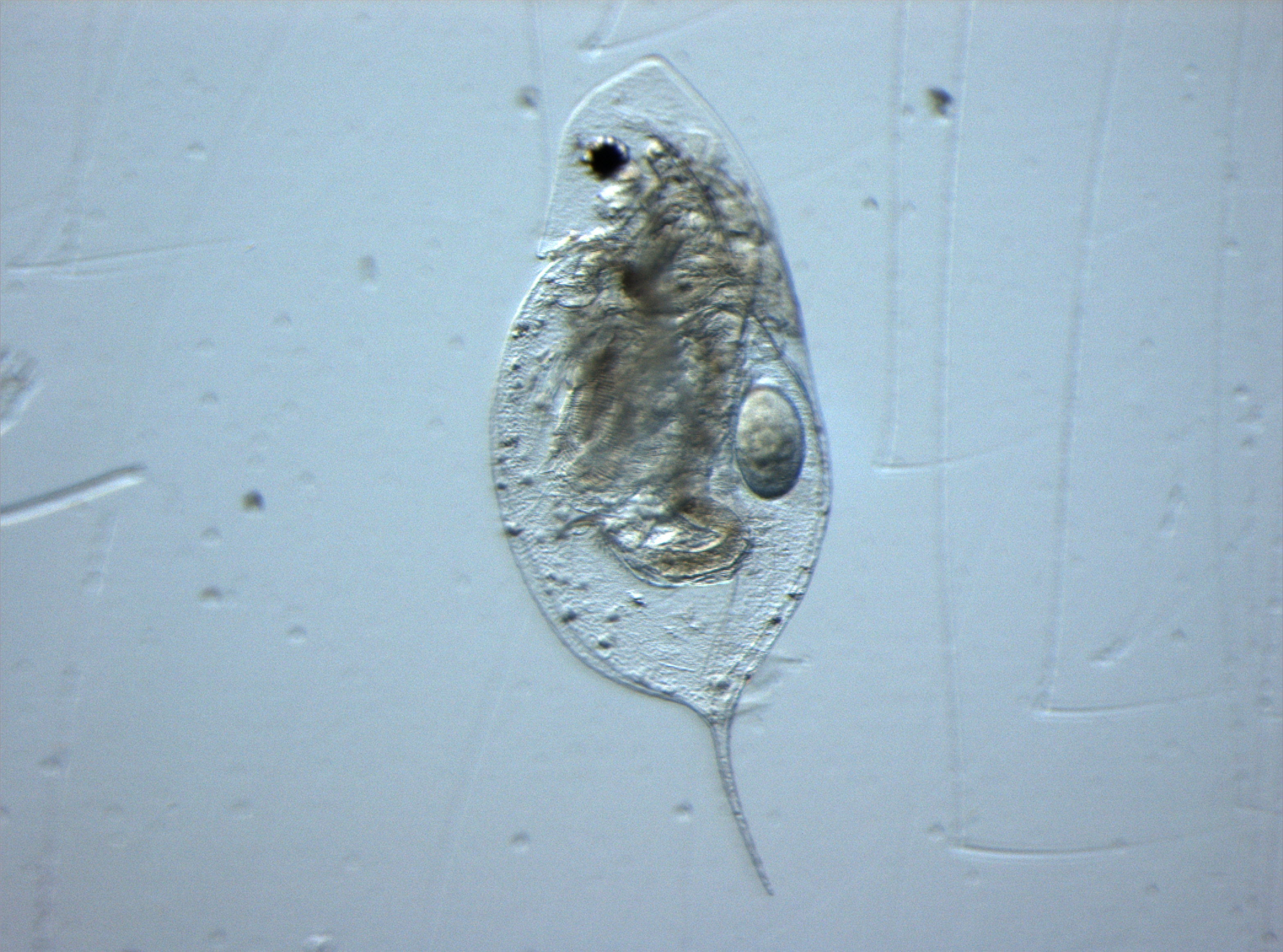 |
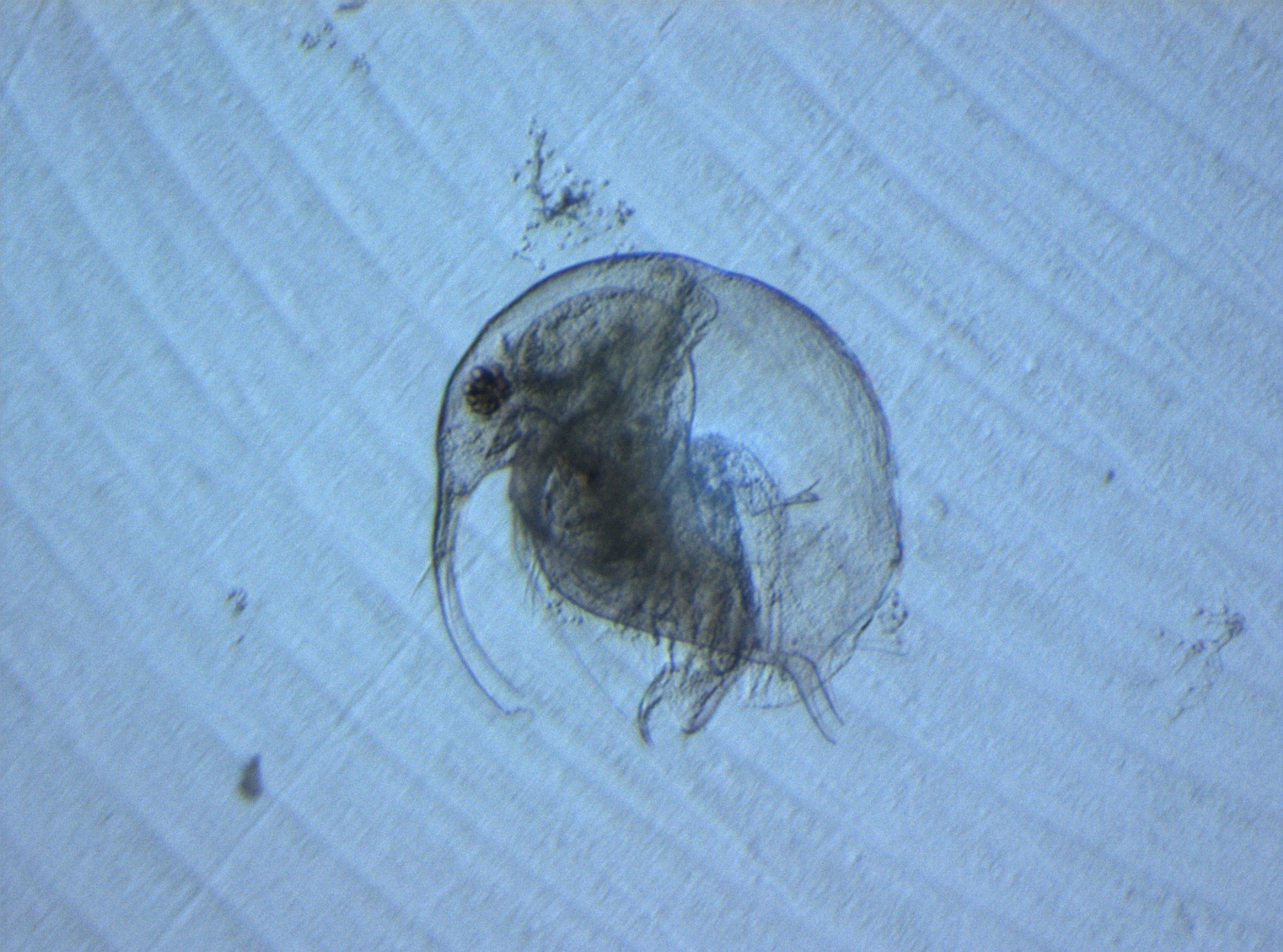 |
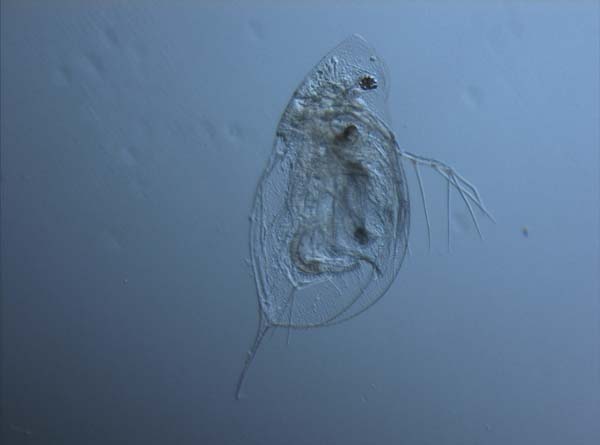 |
| Daphnia
mendotae - an example of a calcium-rich cladoceran. (Photo: Shelley Arnott, Queen's University) |
Bosmina sp. - an example of a calcium-poor cladoceran. (Photo: Jessica Forrest) |
Another example of Daphnia mendotae - a calcium-rich cladoceran. (Photo: Jessica Forrest) |
| Cladoceran Subfossils These images are of individual parts of cladocerans that preserve in lake sediments. Tracking how the abundances of these remains in lake sediments has changed through time allows paleolimnologists to infer past population fluctuations within cladoceran communities. |
||
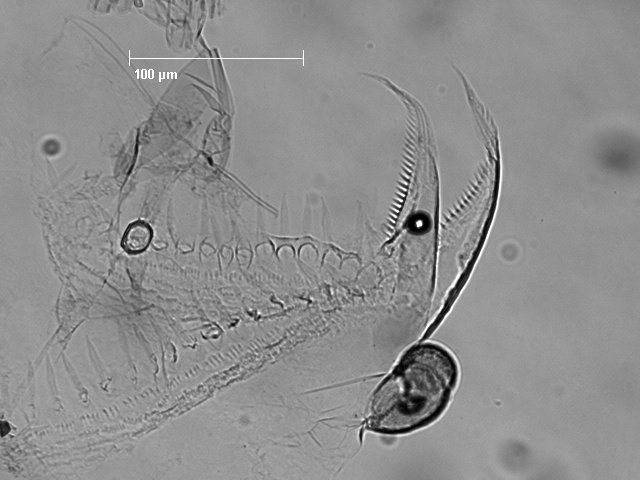 |
 |
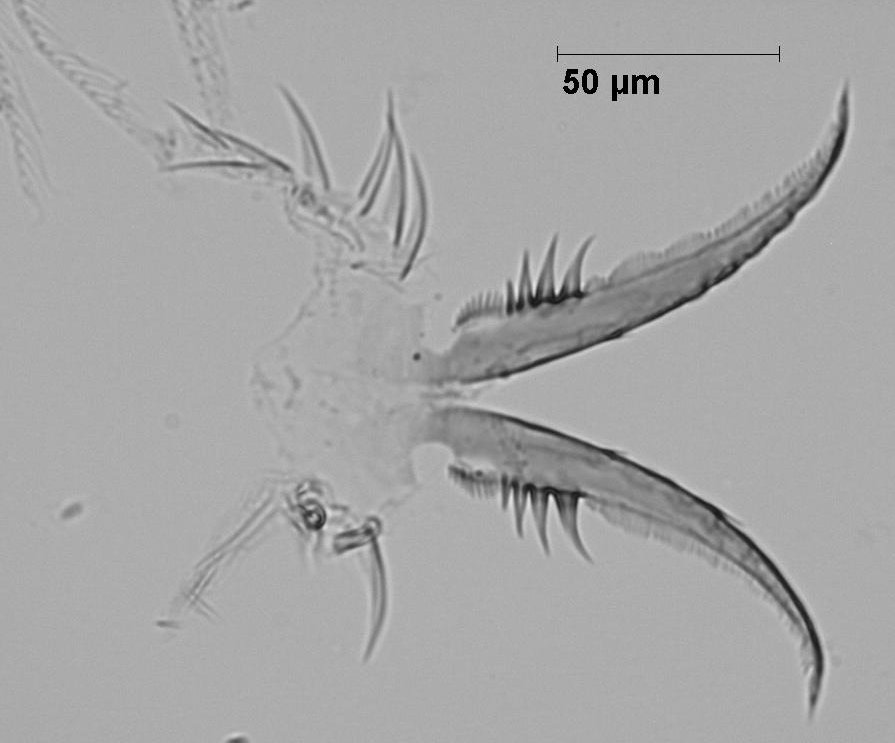 |
| The part of Holopedium that preserves well in lake sediments - the post-abdominal claws. (Photo: Adam Jeziorski, Queen's University) |
Bosmina
sp. carapace, one of its body parts that preserves well in lake
sediments. (Photo: Anna DeSellas, Queen's University)< |
Post-abdominal claw from a
calcium-rich daphniid, one of its body parts that preserves well in
sediments. (Photo: Anna DeSellas, Queen's University) |
| Boreal Lake Photos Example images of the softwater boreal lakes that are susceptible to aqueous calcium decline. |
||
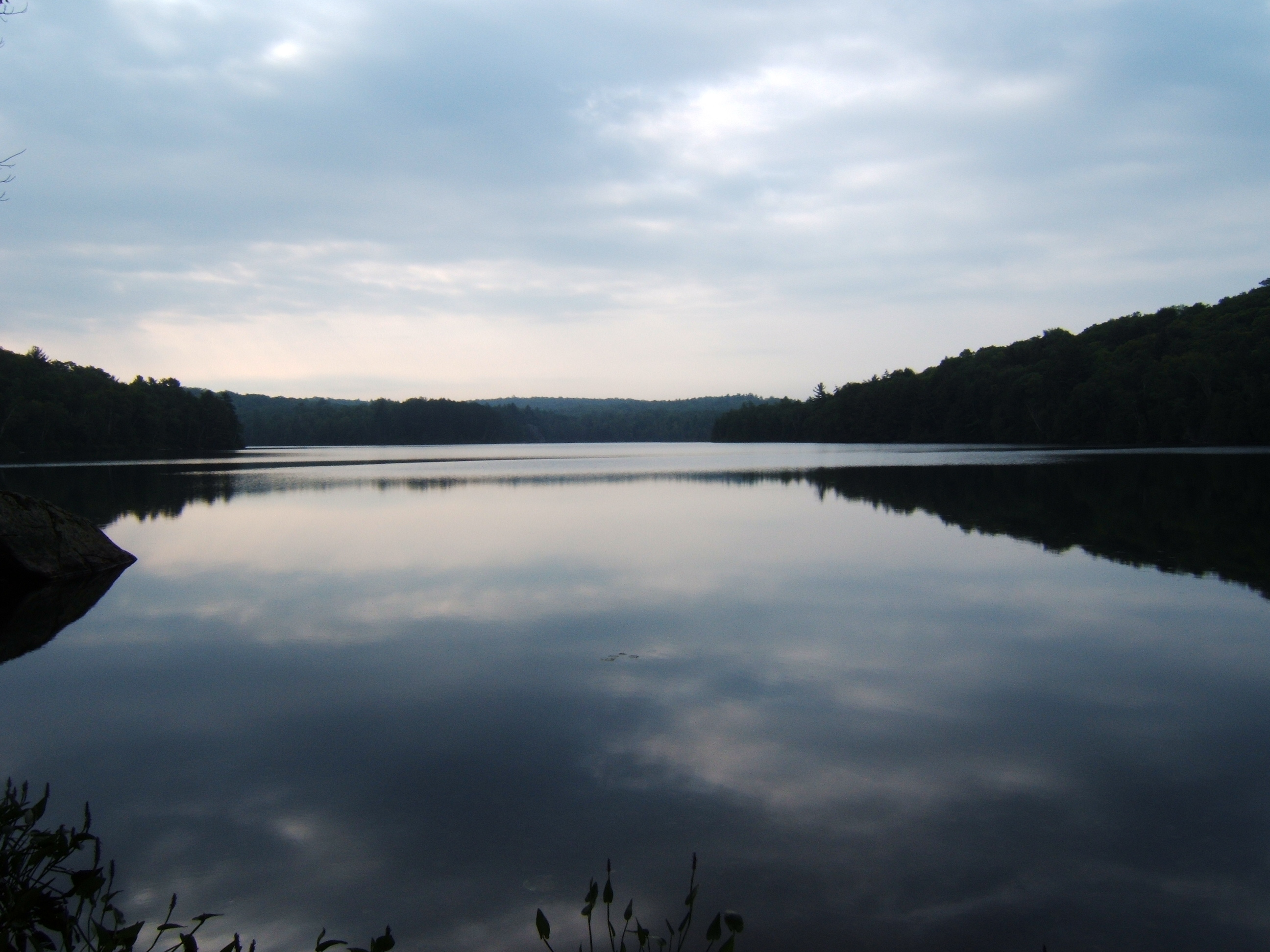 |
 |
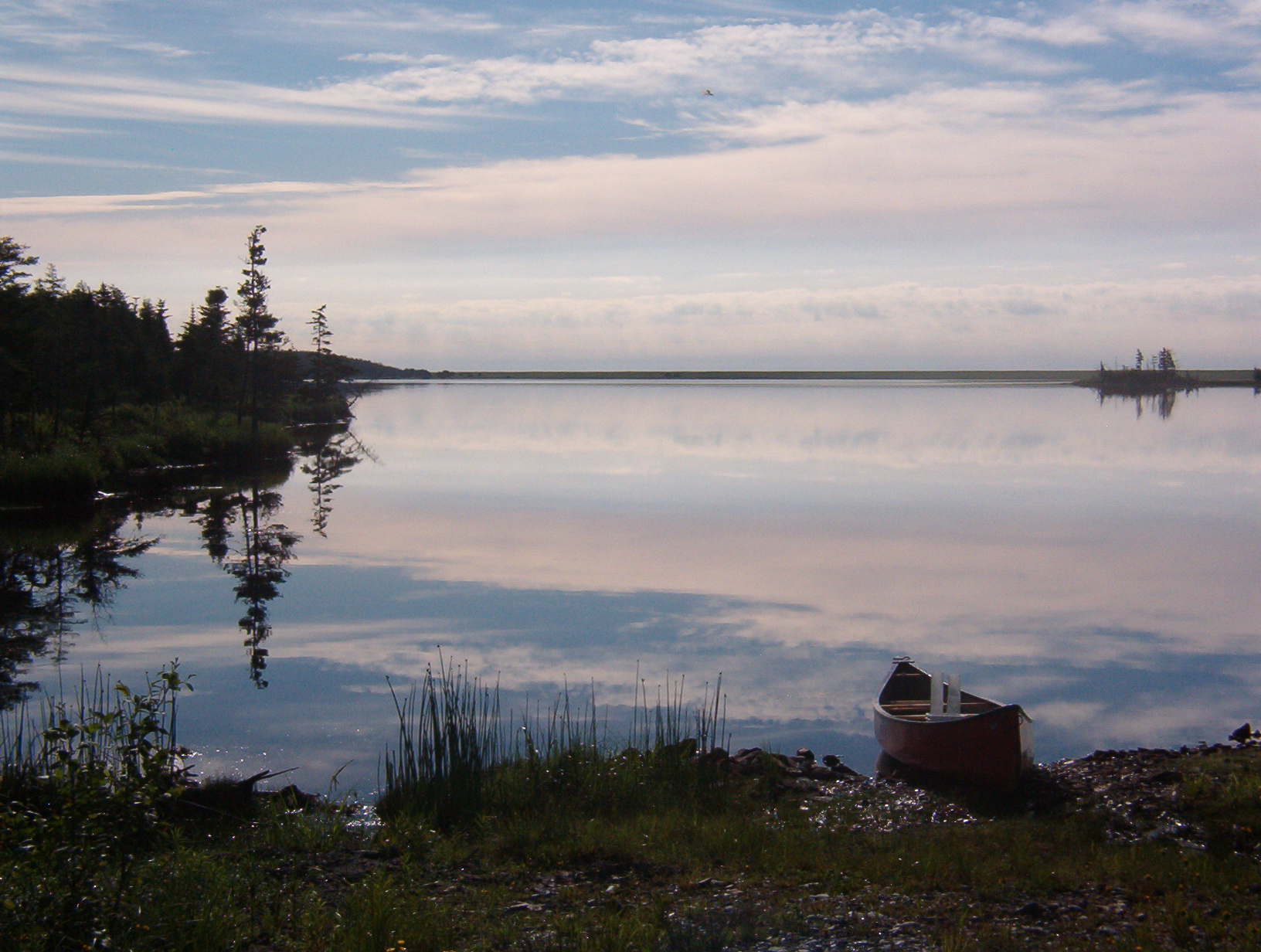 |
| A typical boreal lake in the
Muskoka-Haliburton region of Ontario. (Photo: Kris Hadley, Queen's University) |
An aerial view of a boreal lake in the Muskoka-Haliburton region of Ontario. (Photo: Canadian Wildlife Service (Ontario Region)) |
A boreal lake in Nova Scotia, Canada. (Photo: Brian Ginn, Queen's University) |
| Paleolimnology
Fieldwork Images of field crews obtaining the lake sediment cores used in paleolimnological analyses |
||
 |
 |
 |
| A field crew setting out to
collect a sediment core from the deep basin of a lake. (Photo: Wendel Keller, Laurentian University) |
Field crew retrieving a sediment
core. (Photo: Wendel Keller, Laurentian University) |
A sediment core collected,
measured and
ready to be sectioned. (Photo: Christine Greenaway, Queen's University) |
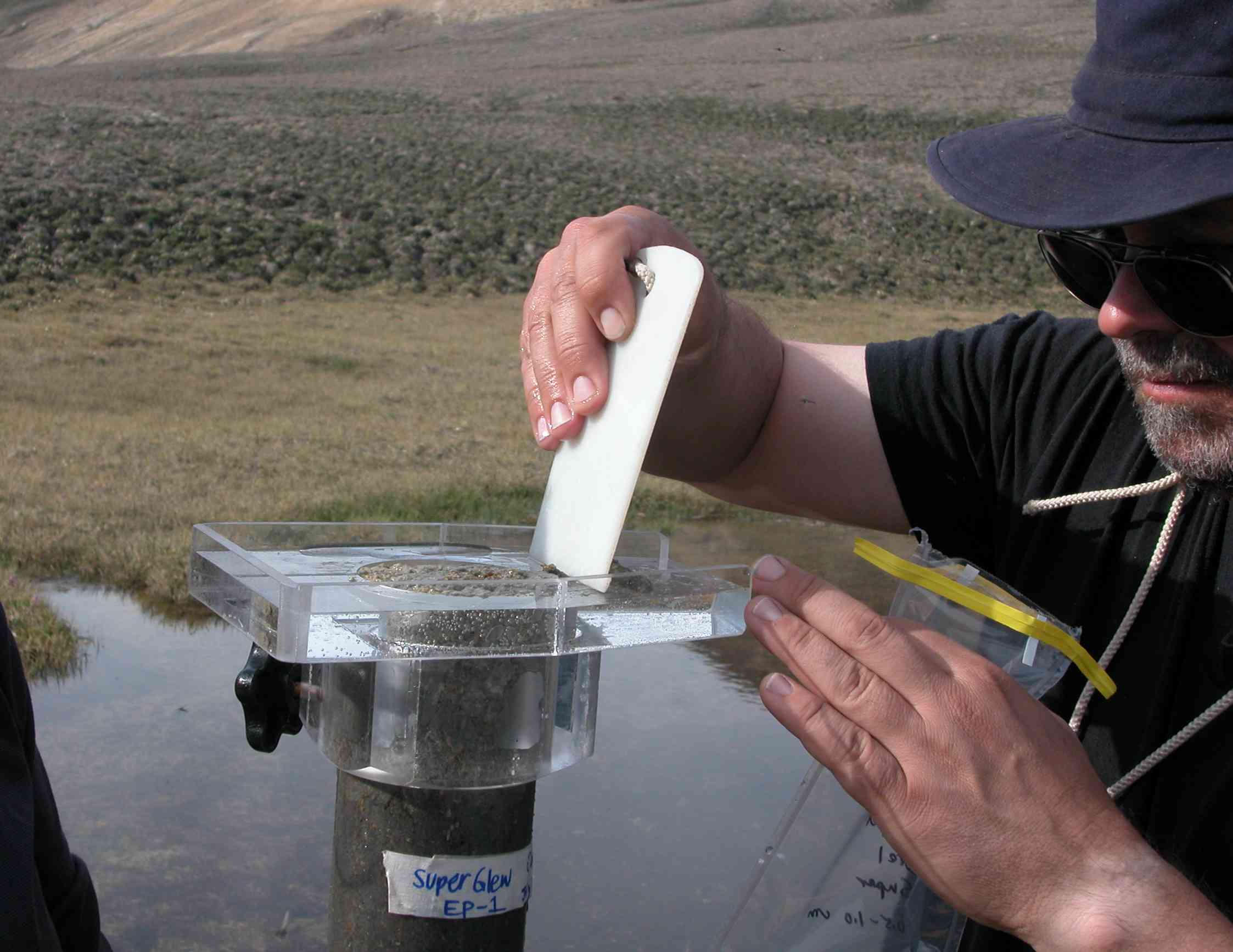 |
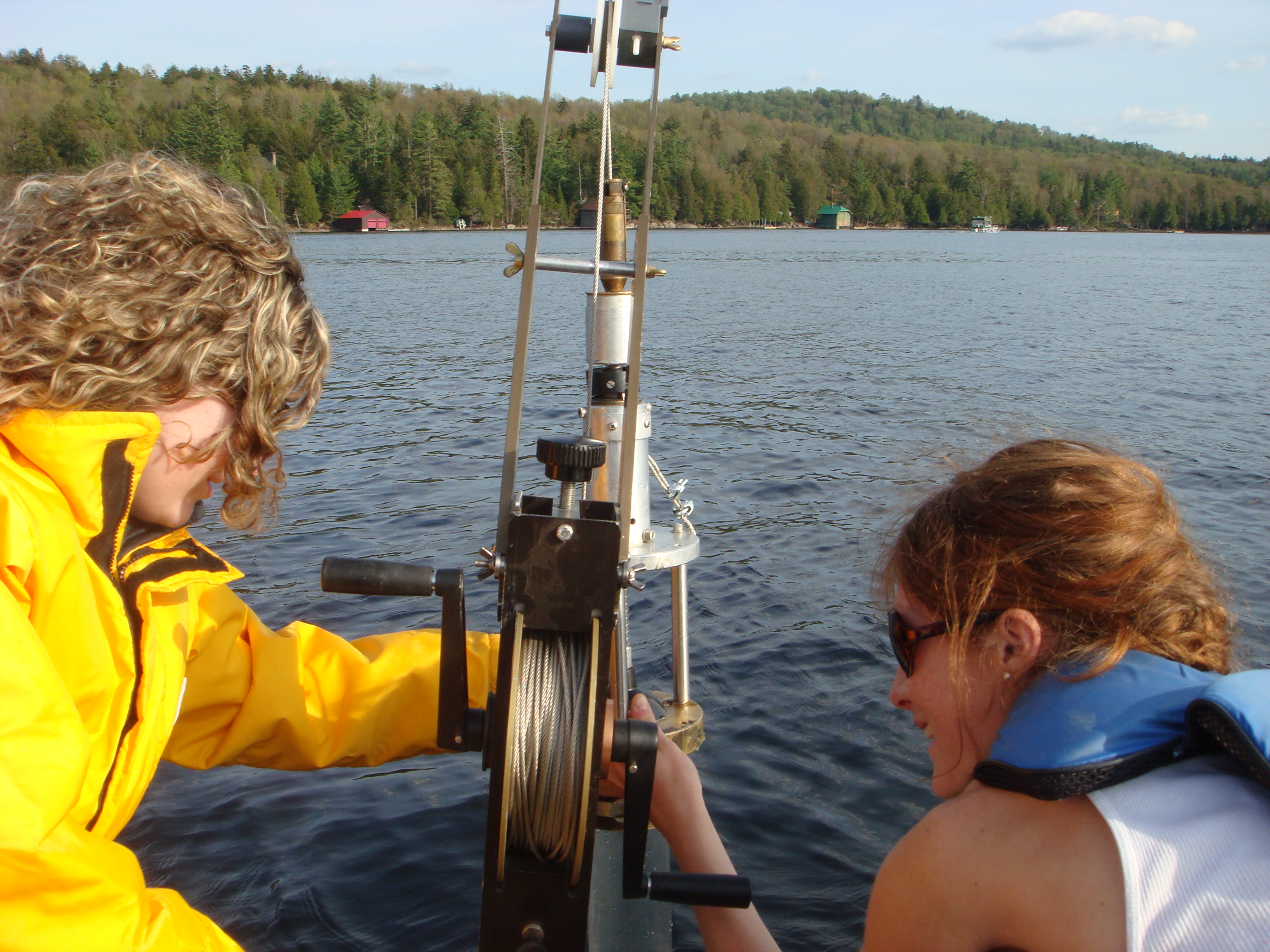 |
 |
| A sediment core being extruded
into sections. (Photo: Marianne Douglas, University of Alberta) |
In deeper lakes, a winch system
is sometimes used to aid in retrieval of the sediment cores. (Photo: Brian Cumming, Queen's University) |
A field crew slicing a sediment core into
individual 0.5 cm sections. As lakes fill in with sediment over time, the deeper down into the sediment you go, the older it is. (Photo: Brian Ginn, Queen's University) |
| Other
calcium-rich biota potentially sensitive to calcium decline Although our manuscript was focused on the impacts of calcium decline on microscopic aquatic biota, other organisms that require large amounts of calcium may be negatively impacted by reduced aqueous calcium availability |
||
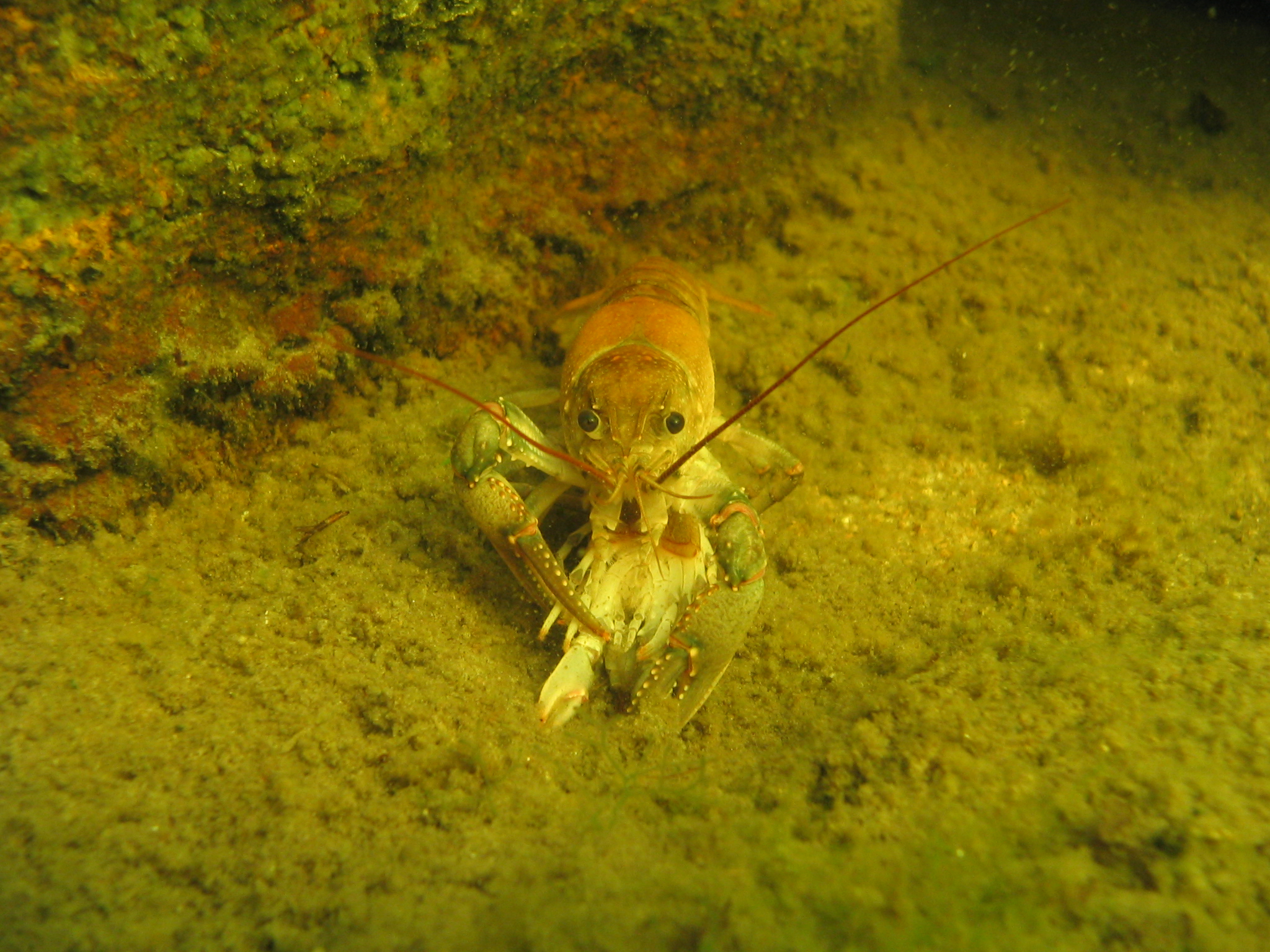 |
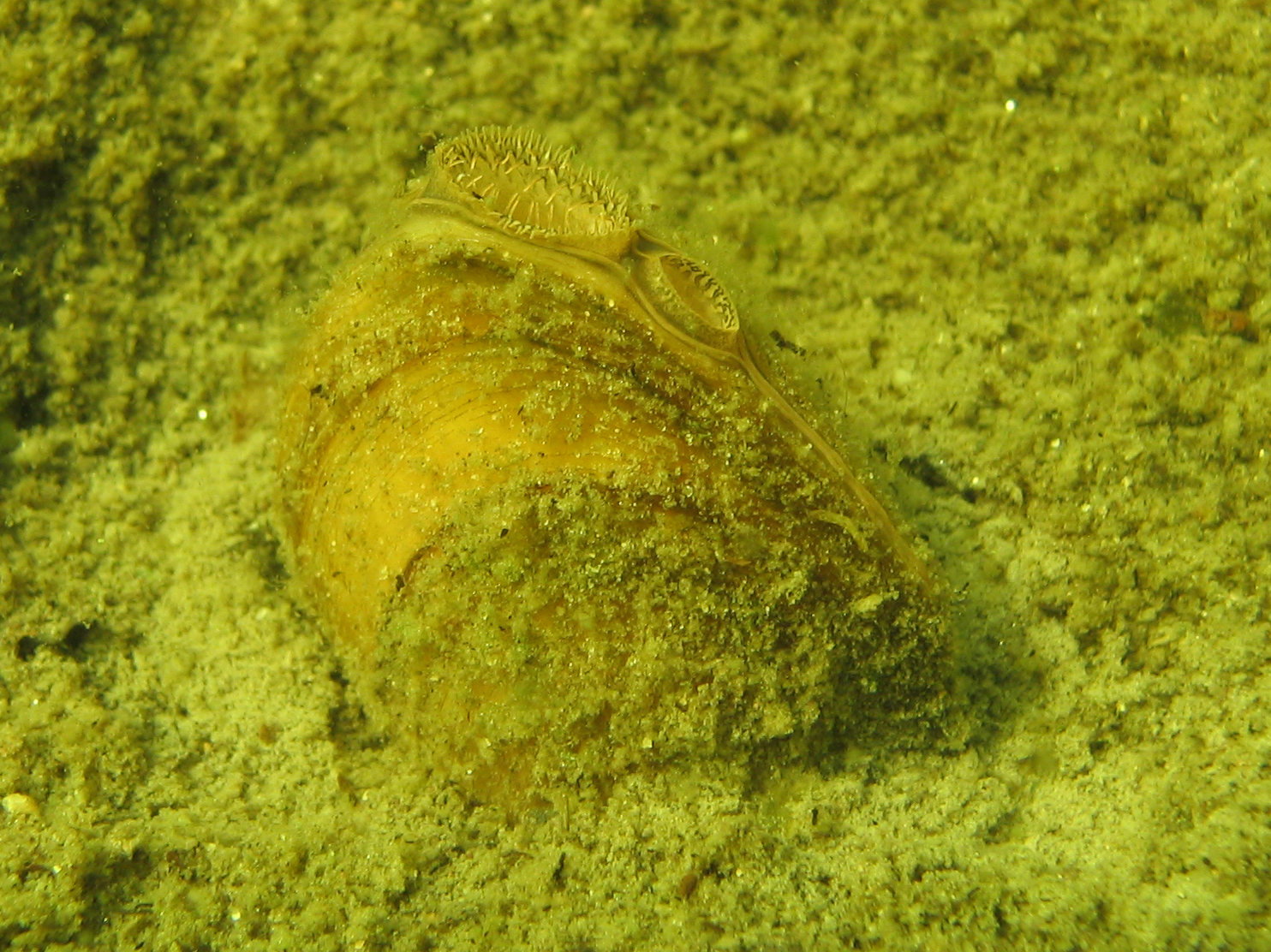 |
 |
| Due to their high calcium content, some species of crayfish may also be sensitive to calcium
decline. [A pair of Orconectes
virilis in Lake 239 at the ELA]. (Photo: Michael Turner, Fisheries and Oceans Canada) |
The high calcium content of
mussels may make them another taxonomic group potentially sensitive to
calcium decline. [Photo shows a Pyganodon grandis grandis individual from Lake 375 at the ELA]. (Photo: Michael Turner, Fisheries and Oceans Canada) |
Snails and other gastropods also have high calcium content. [This snail (taxonomic identity uncertain) is from Lake of the Woods and is acting as a host surface for Hydra]. (Photo: Michael Turner, Fisheries and Oceans Canada) |